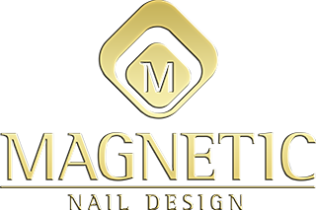What makes each acrylic different?
August 15, 2020 2020-08-29 13:48What makes each acrylic different?
At the end of the 1970’s, artificial nails were “acrylic” and were worn more and more frequently. Back then, most acrylic systems were hard and did not offer any real flexibility, because the systems were actually developed for dental porcelain. The idea was also for nails to be hard, because it was thought that nails that weren’t hard would lead to the natural nails being unable to grow long and would thus lead to breaks. It became clear slowly but surely that the right balance between flexibility and hardness actually leads to long-lasting strength.
It was also uncovered that hardness actually hampered adhesion of the product to the nail. The best possible adhesion is only achieved when the condition of the natural nail corresponds with the properties of the artificial nail. In the past, natural nails had to be “roughened up” with a 100 grit file and aggressive primers were used, in order to get these acrylic product penetrated deep into the natural nail. This resulted n complains such as allergic reactions, excessively field nails and bloody breaks.
As acrylic nails became increasingly popular, more and more products were released, developed specifically for artificial nails. The first major change was actually the addition of UV blockers which ensured that acrylic nails did not discolor as rapidly. This made it possible to create the so-called French Manicure nails. The nails were mainly worn with polish; it was part of the fashion scene, but also necessary because the acrylates had the tendency to become very yellow. These UV filters, which are still used today, are actually blue to purple in color and besides stabilization of the color, don’t offer any real added value and furthermore do not enhance the quality of the powder and liquid combination.
The real breakthrough, however, was the development of a liquid with excellent adhesive properties, which made the acidic primers superfluous. Initially, the acrylates that were used were still rather hard and aggressive, but the acrylates that are used today have become milder and milder, yet more adhesive, despite this.
A product specific molecular structure forms when a liquid and powder is combined. The type of structure determines the hardness or flexibility of the final artificial nail. Initially, only molecules that were able to form straight rows were used, a so-called linear structure, which made the product extremely hard, but also very susceptible to breakage. The next generation products were based on a “cross-link” structure which made the artificial nails more flexible, and with their 3-dimensional structure were able to provide more freedom of movement and could give way when the nails were pushed: breakage was no longer an issue!
Nowadays, most artificial nail systems use so-called IPN structures. IPN stands for Interpenetrating Polymer Networks: a structure with even more underlying connections, which allows for thinner artificial nails with even more flexibility.
Another important advantage of this molecular structure is that these nails are more resistant to solvents. Although this makes removal more difficult, because the acetone does not penetrate the nail as quickly, on the other hand discoloration is a thing of the past. since more underlying connections must be formed with the structure, curing does take a little longer which might be considered a negative effect. However, at the same time, the nail technician has more control over the product and it is possible to create even deeper smile lines.
The mix ratio: Each acrylic system consists of two components: liquid and powder. The ratio between these two components is called the mix ratio and is extremely important. Magnetic recommends a mix ratio can be adjusted freely, according to your needs. When we look at the function of liquid and powder, the liquid is responsible for adhesion, molecular structure and flexibility and the powder provides filling and color to the artificial nail. In other words: the liquid serves as the cement and the powder as the building blocks.
Since it is the powder that provides the color, it is extremely important to always use the same ratio , to a reasonable extend. If one nail is applied very wet, but the other nail is applied extremely dry, the nails will be visually and clearly different. This is certainly true for French Manicures : if the white powder is applied too wet, it will dry to a grey shade, and the lovely white effect will be lost. The UV blockers in the liquid are mostly to blame for this.
The mix ratio has a particular influence on the processing time of the product, but even though most nail technicians might think so, working more wet is not the solution if you don’t have time to create the perfect smile line. You actually waste too much time correcting the excessive outflow. If you need more time to create the perfect smile line, it is better to work dryer. The advantage of working dry is that the white acrylics stay white because more white pigment is used, it takes longer for the liquid to make connections, therefore reacting slower, which gives you more time.
The risks are higher when working too wet with acrylics. There is a possibility that the liquid will flow out and end up in the cuticle, which will result in pocket lifting (the nail lifting in the center at the Apex) but even more important are the complaints associated with allergic reactions. Pay special attention to this if you make your own nails. It is very tempting to work a little wetter then, but you really must avoid it. Working too dry is also not advisable either, because it will influence adhesion.
Acrylic is a two-component system which consists of a liquid (Monomer) and one or more powders (Polymers). A strong synthetic is formed when these components are mixed and depending on the mix ratio, the type of Monomer and/or the type of Polymer used, this synthetic layer will be harder or more flexible.


